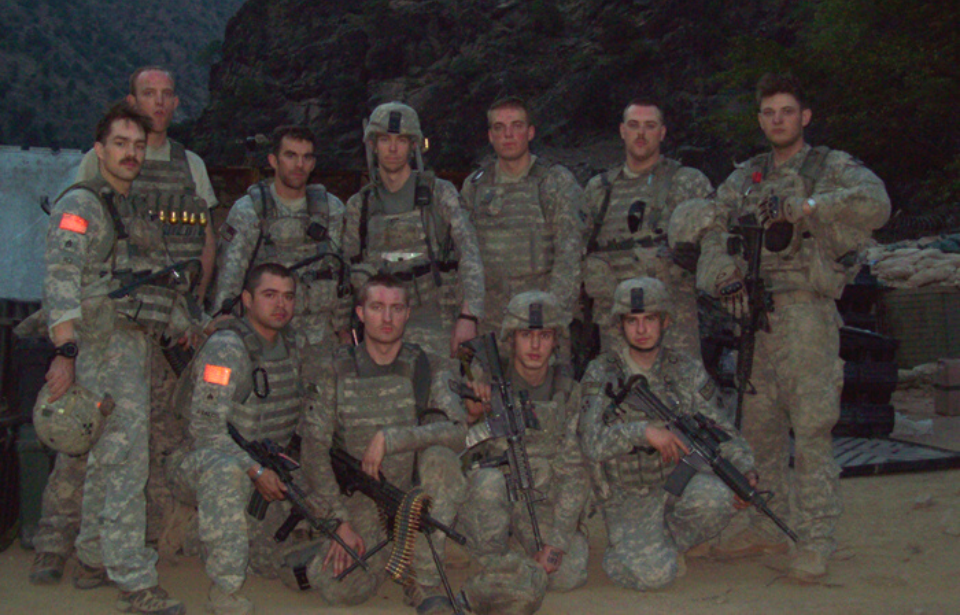On October 3, 2009, more than 300 Taliban insurgents initiated an assault on US Army Combat Outpost (COP) Keating in Kamdesh, Afghanistan. Despite facing overwhelming odds, the roughly 50 soldiers of the Black Knight Troop (3-61 Cavalry Regiment, 4th Brigade Combat Team, 4th Infantry Division) courageously repelled the attackers. Nevertheless, this heroic defense exacted a heavy toll: eight soldiers made the ultimate sacrifice, and 22 others sustained injuries.
Kamdesh wasn’t a good location for a combat outpost
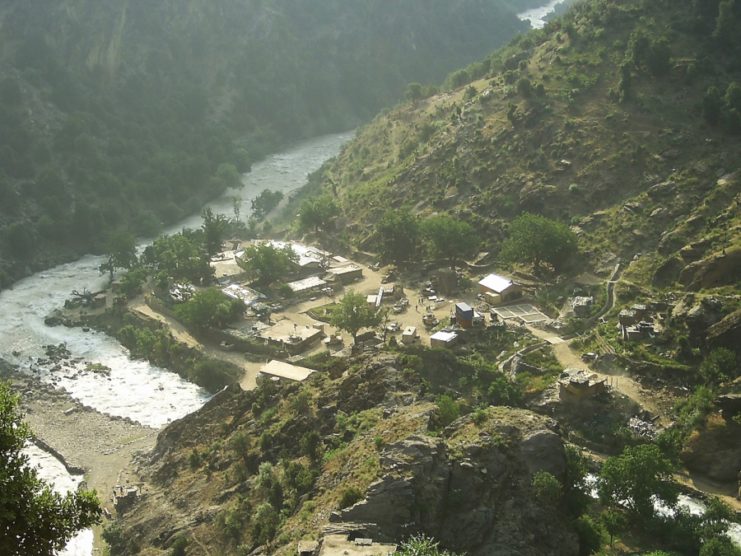
Established in 2006, Combat Outpost (COP) Keating was situated in Afghanistan’s Nuristan province, specifically in the Landai Sin Valley. The location raised concerns among arriving soldiers, who viewed it as highly vulnerable, due to towering mountains surrounding the valley, leaving the outpost exposed to attacks from above. Moreover, the rugged nearby road utilized by Afghan forces necessitated nighttime helicopter resupplies.
Despite these challenges, COP Keating was strategically positioned near the Pakistani border, a crucial area for anti-coalition forces with supply lines in Pakistan. It was hoped stationing allied troops in Kamdesh, where three valley systems converged, could disrupt the flow of weapons and insurgents from the country.
The base also aimed to foster relationships with locals through development projects viewed as a kind of counterinsurgency effort. However, Taliban forces persisted in the area. Three years after its inception, COP Keating was deemed ineffective due to its weak defenses and lack of clear purpose, leading to its planned closure in August 2009.
Throughout its existence, COP Keating faced regular sniper and mortar attacks, which only intensified in 2009, with 212 incidents recorded in the base’s final nine months. Complicating matters, delays in the closure arose due to transportation issues and escalating tensions between US President Barack Obama and Afghan President Hamid Karzai. This prolonged the vulnerability of the Black Knight Troop stationed there, ultimately culminating in an inevitable engagement.
Battle of Kamdesh, minute by minute
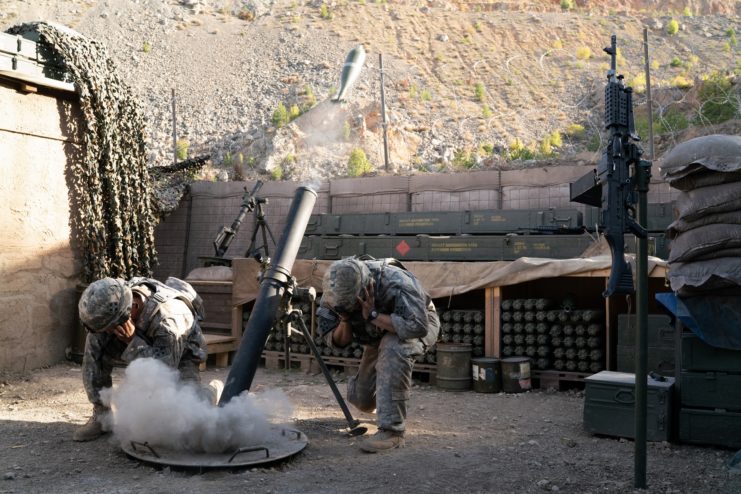
Around 3:00 AM on October 3, 2009, 300 Taliban-affiliated insurgents arrived in Kamdesh and instructed locals to evacuate. Following their morning prayers, they launched an assault on COP Keating using Soviet-era B-10 recoilless rifles, DShK heavy machine guns, rocket-propelled grenades (RPGs) and mortar fire.
The insurgents possessed detailed knowledge of the base’s layout and weaponry. They prioritized attacking its most potent weapon: the 120 mm mortar. While some fighters descended upon COP Keating, others targeted nearby Observation Post Fritsche. By 6:03 AM, the post had transmitted an urgent distress call, “FRITSCHE AND KEATING IN HEAVY CONTACT.”
Within two minutes of the attack beginning, the first American soldier fell; Pfc. Kevin Thomson succumbed to a gunshot wound to the face while safeguarding the northernmost mortar pit. Shortly after, Sgt. Josh Kirk was struck by shrapnel from an RPG blast as he prepared an AT4 anti-tank rocket. Tragically, a sniper’s bullet then hit him in the head.
Despite their valiant efforts to retaliate from armored Humvees armed with machine guns, the American troops found themselves outnumbered and outgunned as their ammunition dwindled. Sgt. Vernon Martin was hit by gunfire and, moments later, an RPG blast dislodged a .50 caliber machine gun from its mount, causing shrapnel to injure him further.
As Martin and another soldier sought refuge near a Humvee, Sgt. Justin Gallegos and Spc. Stephen Mace joined them. With no means of fending off the advancing Taliban forces, the group retreated into the vehicle, their vulnerability heightened with the Humvee’s M240 machine gun rendered inoperable. Spc. Ty Carter braved enemy fire to supply ammunition for the immobilized Humvee. However, with COP Keating increasingly exposed, the situation grew dire.
Spc. Michael Scusa met his end from a bullet to the neck while dashing from the barracks to reinforce another position. Seeking to shield his comrades trapped in the Humvee, Staff Sgt. Clinton Romesha unleashed fire from his own M48 machine gun at the enemy, only to sustain injuries under the onslaught of gunfire.
Afghani guards fled as the fighting intensified
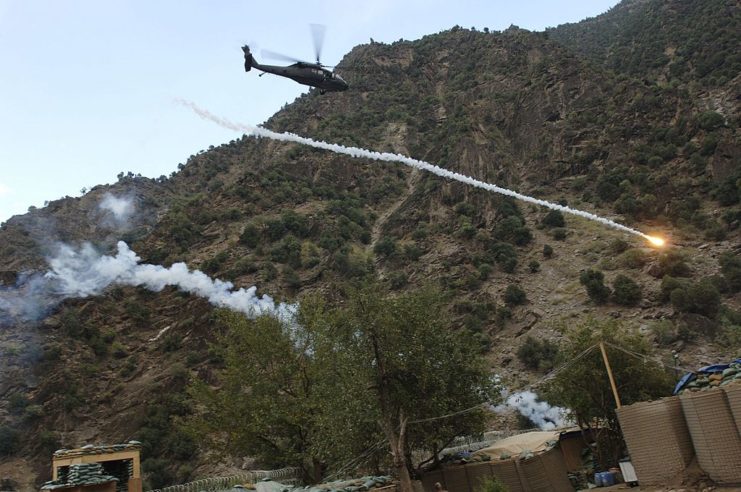
Forty-eight minutes after the Battle of Kamdesh began, the Taliban had overwhelmed COP Keating’s perimeter defenses. Local Afghan National Army soldiers stationed as guards around the base were begged to stand their ground, but ultimately fled as the fighting intensified. American soldiers reported that none of the Afghani troops stayed behind, opting to run, hide and/or steal equipment and supplies from the base during and after the attack
The Taliban entered the base and set fire to its main buildings. An hour into the battle, COP Keating’s defenders fell back to protect two structures as more of the base fell. As additional fighters filed in, the remaining US troops realized the possibility of being overrun was growing. Lt. Andrew Bundermann started to issue an order to shrink the perimeter and concentrate firepower. However, Romesha gave one last rallying cry, telling the men to “retake this f****** camp and drive the f***ing Taliban out!”
The small group began plotting two coordinated attacks. Sfc. Jonathan Hill agreed to take his men toward the east side, while Romesha rallied several to join him in the western part to retake both the ammunition storage shed and main entry point to the base. As they planned, Boeing AH-64 Apaches arrived on-scene and began taking out Taliban positions along the mountainside.
A final attempt to take back control of Combat Outpost Keating
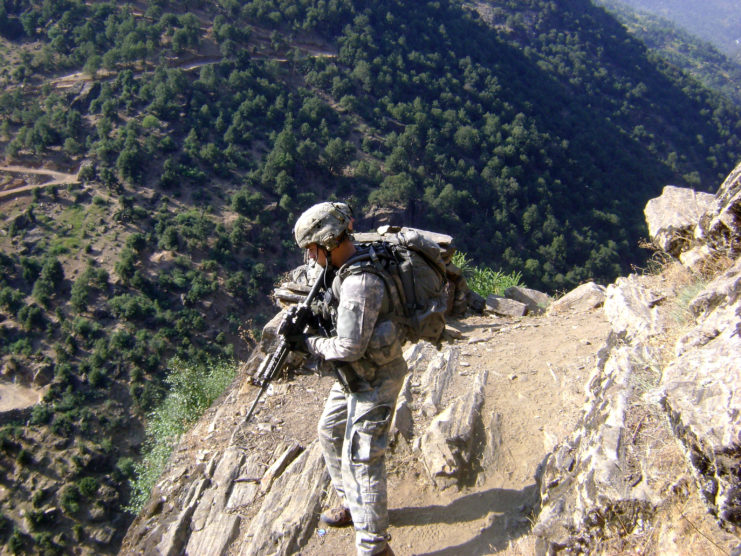
Romesha told his men, “We’re taking this b***h back,” as they crept forward and arrived at the ammunition storage shed. They grabbed grenades and set their sights on the Shura building, a mosque targeted by the invading Taliban fighters. The eight men faced hundreds of insurgents, but managed to clear the area and move to the dining hall, before reaching the Shura and securing COP Keating’s entrance.
While American air strikes continued to support the battle going on below, a new threat emerged: fire. A burning tree threatened the aid station, which was filled with wounded soldiers. Luckily, those still fighting cut it down with a chainsaw before it could fall. By 12:30 PM, the majority of the Taliban fighters were running from the area, accepting defeat.
The 1-32 Infantry Quick Reaction Force (QRF) arrived on the scene and dispatched the remaining insurgents – in all, 150 were killed in the battle. By 7:00 PM, COP Keating was secured. Eight American soldiers were dead, while another 22 were wounded. Within a matter of days, the remaining troops were evacuated from the base, which was subsequently destroyed by a Rockwell B-1 Lancer.
Reliving what happened during the Battle of Kamdesh
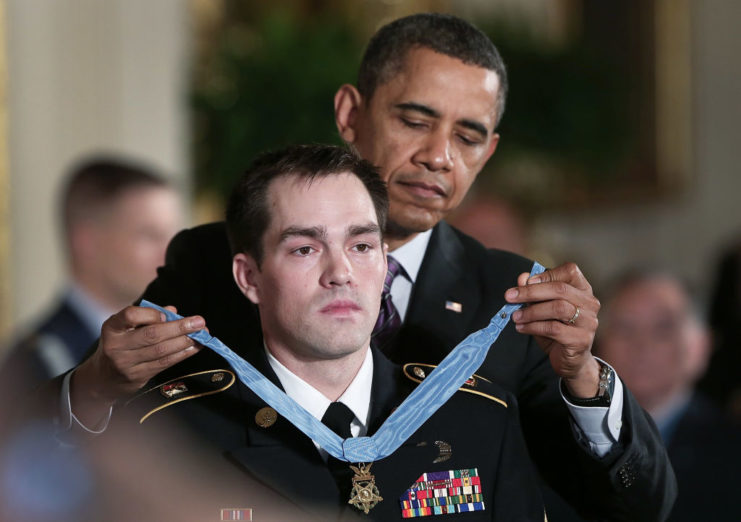
In 2013, Romesha and Carter received the Medal of Honor for their courage, bravery and leadership during the Battle of Kamdesh. Additionally, 27 Purple Hearts, nine Silver Stars, 37 Army Commendation Medals with “V” and 21 Bronze Stars were presented to others who fought. The Silver Stars awarded to Bundermann and Gallegos (the latter posthumously) were upgraded to Distinguished Service Crosses.
In 2020, a film about the attack on COP Keating was released, based on Jake Tapper’s best-selling book, The Outpost: An Untold Story of American Valor. When one of the battle’s veterans caught wind that his experience would be made into a movie, he felt concerned about how the battle would be portrayed.
Writing in an article for The New York Times, retired Lt. Col. Stoney Portis explained, “Over the years, I have learned that sharing the experience allowed many of us to put our emotions into words. That process helped us heal, but a bad rendering of the battle would leave us talking about what the movie got wrong instead of what actually happened.”
Portis reached out to director Rob Lurie, who himself is a US Army veteran and graduate of US Military Academy West Point. He and fellow veteran, retired Maj. Chris Cordova, flew to Bulgaria to visit the film’s set. “When Cordova and I arrived on set, both of us were astounded. It looked just like our outpost on the day of the battle,” Portis wrote.
In his NYT piece, the veteran described walking into the replica aid station, where Cordova burst into tears. Nearly 10 years prior, his travel companion, a physician’s assistant at COP Keating, had worked for hours treating the wounded from the battle. One of those he’d cared for was 21-year-old Mace, whom Cordova kept alive for nine hours by giving him blood transfusions from other soldiers, including himself.
More from us: Korengal Valley: Why the Region Is Nicknamed the ‘Valley of Death’
Portis described how he and Cordova felt watching The Outpost be filmed, reliving the most traumatic day of their lives. In a bizarre twist, the combat veteran realized the powerful nature of watching his story – to be a listener, instead of the speaker. As he explained, listening is one of the biggest parts of the healing process, as by “allowing soldiers to tell their story, by hearing their story, you are also part of the healing.”
